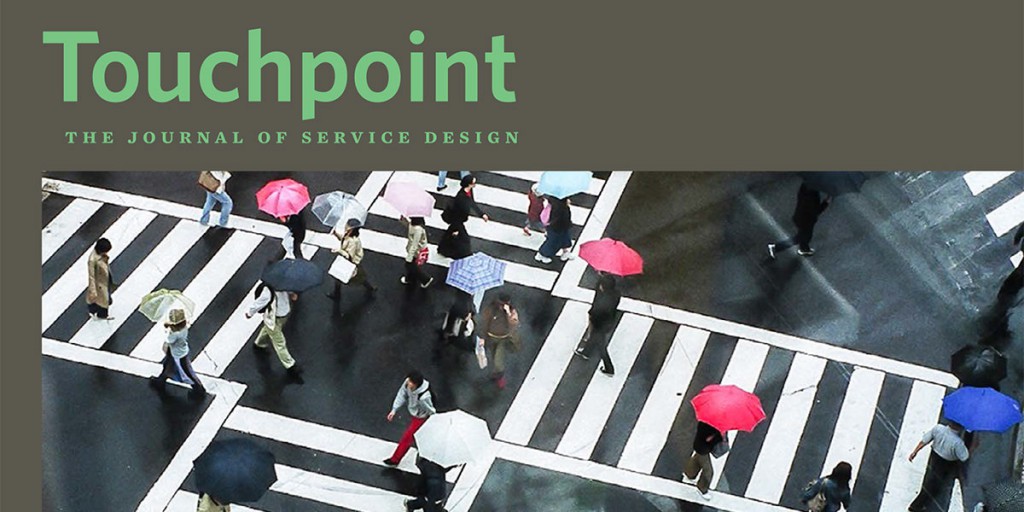When I learned about the field of user experience in the mid 1990s, its primary objective—making technology easy to use—was easy for me to grasp. My education in cognitive science, psychology, and computer science gave me tools and frameworks that I could immediately apply.
Service design took a bit longer for me to grok. Shelley Evenson first introduced me to the discipline while I was a grad student at Carnegie Mellon and she was a visiting professor. Seven years later, when I first started writing about service design for Forrester Research, I fumbled for a definition that went beyond “the design of services.” (And, yes, I know that using a word in the definition of itself is a terrible idea.) Today, I describe service design as both a mindset and a methodology, focused on defining ideal customer journeys and the ecosystems that are required to deliver and support them.
Customer experience also proved a bit tricky for me to define at first, especially given its overlap with both user experience and service design. But the design of new and/or improved customer interactions is just half of what this discipline entails. Much of the customer experience work that happens on any given day centers on managing existing interactions—listening to customer feedback, prioritizing customer issues and the investments required to fix them, and measuring the impact of all of these efforts on the business.
At its core, customer experience is about changing the culture of the entire organization so that employees and executives behave and make decisions with customers top of mind. One customer experience professional at a large financial services firm recently told me that he spends about 50 percent of his time educating his organization about what his team is doing, why they’re doing it, and what impact it will have—and another 10 percent training people on specific customer experience skills.
But Wait! There’s More!
One additional customer-centric discipline has emerged and is growing rapidly: customer success. I ran across a job posting for “VP of Customer Success” in early 2013, around the time of the world’s first customer success conference. (About 300 people attended that event — and the same conference drew nearly 1000 attendees in 2014.) I assumed that the company was just looking for a customer experience exec by a different name, and didn’t think much of it. But soon I realized that while the two disciplines are related, customer success is another animal altogether.
The first major difference is that customer success teams are primarily found in software-as-a-service (SaaS) companies, while customer experience teams exist in companies where software is not the primary product/service being delivered. SaaS companies are typically subscription based, and one day a SaaS executive figured out that customers were more likely renew if they actually received value from the software they had paid for. (Eureka!) This realization, plus the availability of realtime analytics to track individual customers’ software usage, led to the first customer success teams and an entire ecosystem of tech platforms that determine “customer health,” which is essentially a score that indicates how much value customers are getting on an ongoing basis. Haven’t logged in for several weeks? Your customer health score will go down, and you might get a call from your customer success manager to see what’s going on.
And that brings us to another major difference between the disciplines. Customer experience was born from marketing, with an eye towards engendering customer loyalty and, as a result, increasing revenue. In contrast, customer success hails from sales and has a laser focus on driving renewals. As is often the case, their respective heritages influence how these two disciplines think and behave. For example, customer experience professionals struggled for years (and, I’d argue, still struggle today) to prove the business value of their work. Customer success teams have no such issue—they can tie their activities directly to churn reduction, revenue, and growth. I’ve really never seen such a numbers-focused bunch as these customer success execs.
My take:
On the one hand I’m thrilled to see yet another customer-centric business discipline emerging. And yet I’m incredibly frustrated by the lack of integration and collaboration between these fields. From my conversations with leaders and practitioners at mega corporations, SaaS startups, and design agencies around the globe, I’m sure of one thing: We’re not converging on customers.
At large corporations, user experience and customer experience teams work in isolation from each other. Many customer experience teams focus solely on customer experience management tasks, largely ignoring the field of service design. Most of the newly minted customer success managers aren’t even aware that the field of customer experience exists—and proactively designing customer interactions (outside of their primary software product) is the last thing on their minds.
Each of these disciplines is caught up in its own little world, each with its own vocabulary, tools, and yardsticks. We’re circling each other—and largely reinventing the wheel in the process.
So what can we do about it?
I would venture to guess that you, dear reader of Touchpoint, are interested in service design because you want to make a difference—within your organization, within your community, or within society at large. But service designers can’t do this alone. To realize our collective vision, we must take the lead in joining forces with other likeminded disciplines.
This edition of touchpoint is a great start. How else can service designers bridge this gap? If you have ideas, please reach out. I’d love to continue the conversation.
***
This post originally appeared in my regular column in Touchpoint Journal, published by the Service Design Network.




